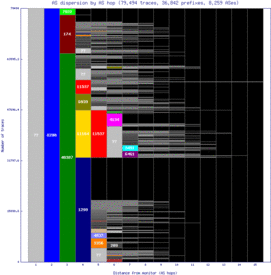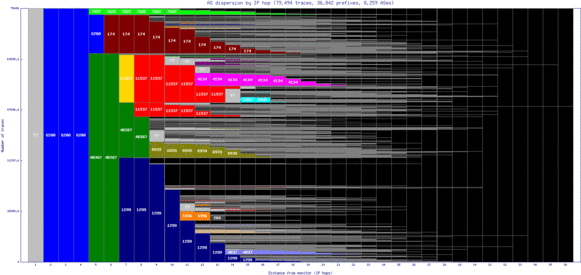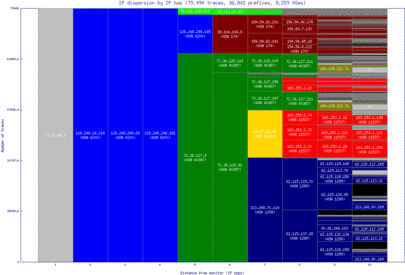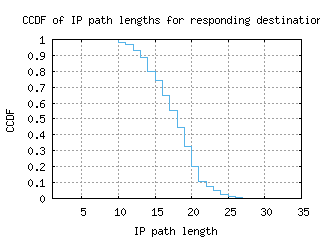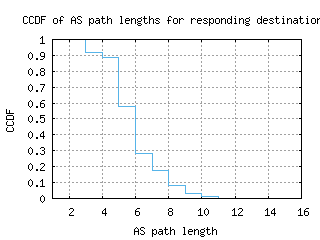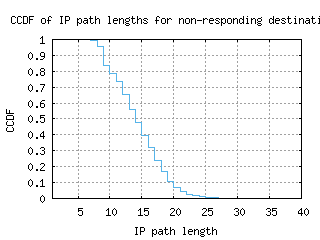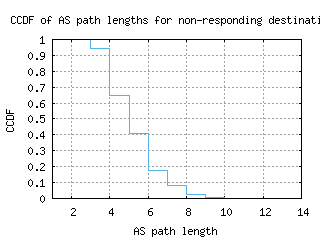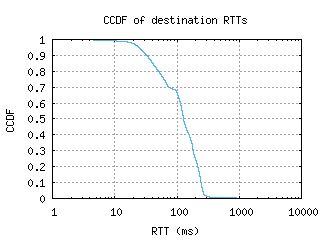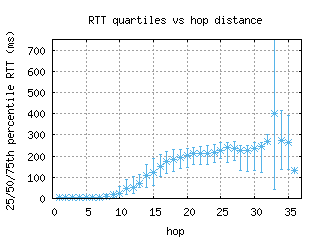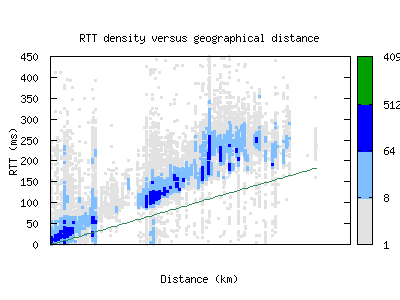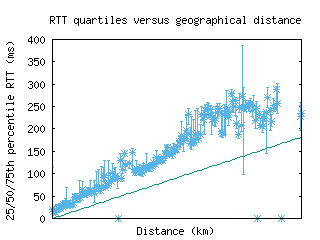Archipelago Monitor Statistics

Archipelago (Ark): CAIDA's active measurement infrastructure serving the network research community since 2007.
Statistical information for the topology traces taken by this individual Ark monitor is displayed below. See the main statistics page for the full list of monitors
| Time range | 2025-09-10 09:30 to 14:31 UTC (5 hours) (110 days ago) |
| Total traces | 42000 |
| Traces with responding destinations | 4809 (11.450%) |
| ASes with responding destinations | 965 (17.574% out of 5491) |
| Prefixes with responding destinations | 3386 (14.680% out of 23065) |
| Protocol version | v4 |
Generated for cycle 13468 on 2025-09-11 11:02 UTC
All images can be clicked on for more detailed information.
Median RTT per country and US state
Mapping RTT by political boundaries can reveal where high latency issues are located.
Path Dispersion
The paths taken by different traces show where the majority of a monitor's traffic travels.
-
AS Path Dispersion (by AS Hop)AS connectivity near monitor
-
AS Path Dispersion (by IP Hop)AS connectivity near monitor (with IP hop distances preserved)
-
IP Path Dispersion (by IP Hop)IP connectivity near monitor
Path Length Distributions
Path length distributions show, on aggregate, how well-connected a monitor is to the rest of the Internet.
-
CCDF of IP path lengths for responding destinations
percentile 10th 25th 50th 75th 90th Max IP path length 14 15 18 21 23 32 -
CCDF of AS path lengths for responding destinations
percentile 10th 25th 50th 75th 90th Max AS path length 5 5 6 7 8 14 -
CCDF of IP path lengths for non-responding destinations
percentile 10th 25th 50th 75th 90th Max IP path length 9 11 14 18 20 35 -
CCDF of AS path lengths for non-responding destinations
percentile 10th 25th 50th 75th 90th Max AS path length 4 4 5 6 7 14 -
CCDF of destination RTTs
percentile 10th 25th 50th 75th 90th RTT (ms) 29.444 58.037 125.978 191.958 241.819 -
RTT quartiles vs hop distance
-
RTT density versus geographical distance
-
RTT quartiles versus geographical distance



 To main statistics page
To main statistics page
